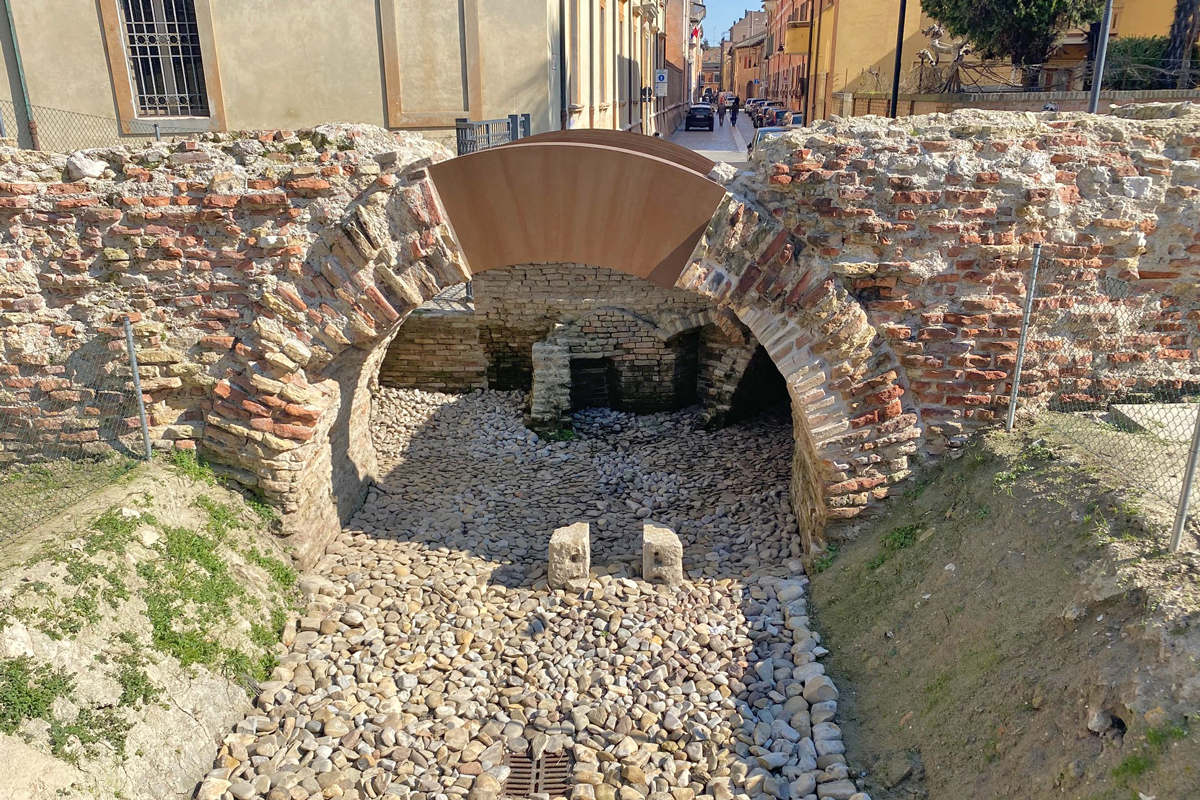Along the stretch of the city walls that from Porta Adriana leads to Porta Serrata, in correspondence with the current Via San Vitale, are the remains of PORTA TEGURIENSE (also known as Porta S. Vitale or Porta di Odoacre).
This access to the city owes its name to the Tegurio river, now known as Lamone, which in ancient times flowed along this stretch of walls.
The gate was the main access to the monumental area of the city.
Given its size (about 5 metres) and the peculiar location, directly connected with the religious buildings of Santa Croce and San Vitale, it was one of the most ancient and important accesses to Ravenna during the Gothic and Byzantine age.
When Ravenna became the capital of the Western Roman Empire in 402 AD, emperor Honorius enlarged the first wall circuit, sacrificing much of the Republican plant built during the fight with Hannibal.
The gate, later renovated and modified, thus dates back to the important building activity of the 5th and 6th century AD – to which we owe the presence of the Unesco World Heritage monuments of the city.
Remains of the external arch, the bastions on each side and the basement of the quadrangular defensive tower looking towards via San Vitale.
Historical and legendary sources mention Porta Teguriense as the crossing point of the Heruli under the guidance of commander Odoacer, who on September 2nd 476 AD entered the city, sacked and conquered it.
A few days later, the Western Roman Emperor Romulus Augustulus abdicated in favour of the latter, thus ending over 1200 years of Roman dominion in Italy – the so-called Fall of the Western Roman Empire.
The structure, which is mostly underground, has recently undergone renovation works embedded in a large project of valorisation of the city walls of Ravenna.







